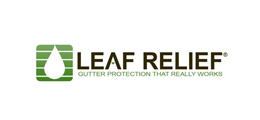When homeowners think about protecting their property, gutters might not be the first thing that comes to mind. Yet, these simple systems quietly guard your foundation, landscaping, and overall home structure from water damage year after year. Without a properly functioning gutter system, rainwater can erode soil, weaken foundations, and destroy expensive landscaping.
In this guide, we’ll break down exactly how gutters safeguard your home and yard; and when it’s time to ensure yours are up to the task.
Why are Gutters So Important for Your Home’s Health?
Gutters aren’t just decorative features. Their main job is to:
- Collect rainwater from your roof.
- Direct it away from your foundation.
- Prevent pooling and erosion around your home.
Without gutters, water would fall freely from the roof, hitting the ground with enough force to displace soil, damage plants, and cause water intrusion into your foundation. Over time, these effects can lead to expensive repairs.
How Do Gutters Protect the Foundation?
Your foundation relies on stable, compacted soil. When water isn’t managed properly, it can seep into the ground around your home and cause problems like:
- Soil erosion that undermines structural stability.
- Foundation cracks from water expansion during freezing and thawing.
- Basement leaks due to hydrostatic pressure buildup.
Example: In regions with heavy seasonal rainfall, water can collect against basement walls if gutters are missing or clogged. Over time, this pressure can force water through cracks and create long-term moisture issues.
If you’ve already noticed standing water near your foundation, your gutter slope, size, or downspout placement may need adjustment.
Can Gutters Really Protect Landscaping?
Absolutely. Landscaping isn’t just about curb appeal, it’s part of your home’s drainage ecosystem. Without gutters, water streaming off your roof can:
- Wash away mulch, decorative gravel, and topsoil.
- Create muddy patches and bare spots in lawns.
- Damage delicate plants and flower beds.
- Compact soil, making it harder for plants to grow.
Pro Tip: Use downspout extensions to guide water toward less sensitive areas of your yard or into a rain barrel for reuse.
If you’ve invested in premium landscaping, upgrading to seamless gutters can reduce leaks and overflow that might otherwise ruin your yard’s layout.
What Happens if Gutters Fail or are Missing?
When gutters are damaged, clogged, or improperly installed, you may notice:
|
Problem |
Impact on Foundation |
Impact on Landscaping |
|
Overflowing gutters |
Soil erosion & basement leaks |
Washed-out plants & mulch |
|
Missing downspouts |
Water pooling near walls |
Flooded garden beds |
|
Sagging gutters |
Uneven drainage |
Patchy lawn & puddles |
|
Clogged gutters |
Increased roof runoff |
Waterlogged flower beds |
These warning signs mean it’s time to clean, repair, or replace your gutter system before damage becomes severe.
Learn More: When to Replace Gutters
Seasonal Factors You Should Keep in Mind
Different times of year bring unique gutter challenges:
- Fall: Leaves and debris can clog gutters, leading to overflow.
- Winter: Ice dams can cause backups that stress your gutter system.
- Spring: Heavy rains test your gutters’ capacity.
- Summer: Storms can loosen or damage gutter sections.
Related Read: Preparing Your Gutters for Winter Weather
How to Maximize Gutter Efficiency
To keep your gutters performing their best:
- Clean them regularly: At least twice a year, or more often if you have overhanging trees.
- Check slope and alignment: Gutters should slope slightly toward downspouts for proper flow.
- Inspect for damage: Look for rust, cracks, or sagging sections.
- Upgrade when necessary: Seamless or larger-capacity gutters can better handle heavy rain.
Final Thoughts
A well-maintained gutter system is one of the most cost-effective ways to protect your foundation and landscaping. By channeling water away from your home, gutters prevent erosion, basement leaks, and damage to your yard’s design. Regular inspections, cleaning, and timely upgrades can extend the life of both your gutters and your property’s most important features. If your gutters aren’t performing as they should, addressing the issue now can save you from expensive repairs later.




















